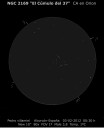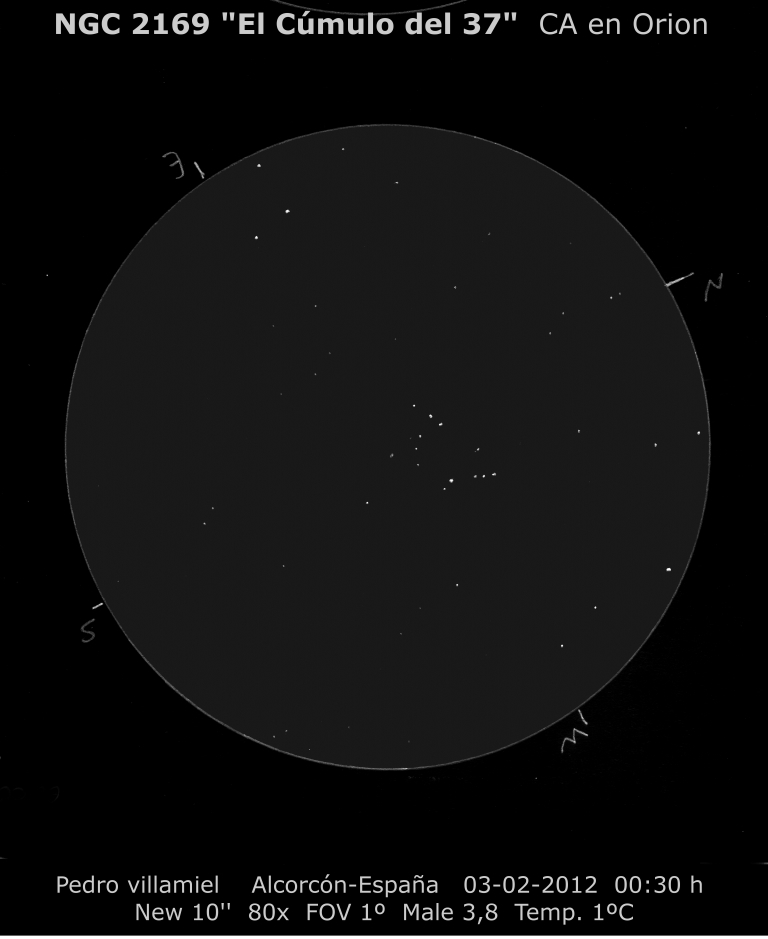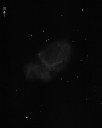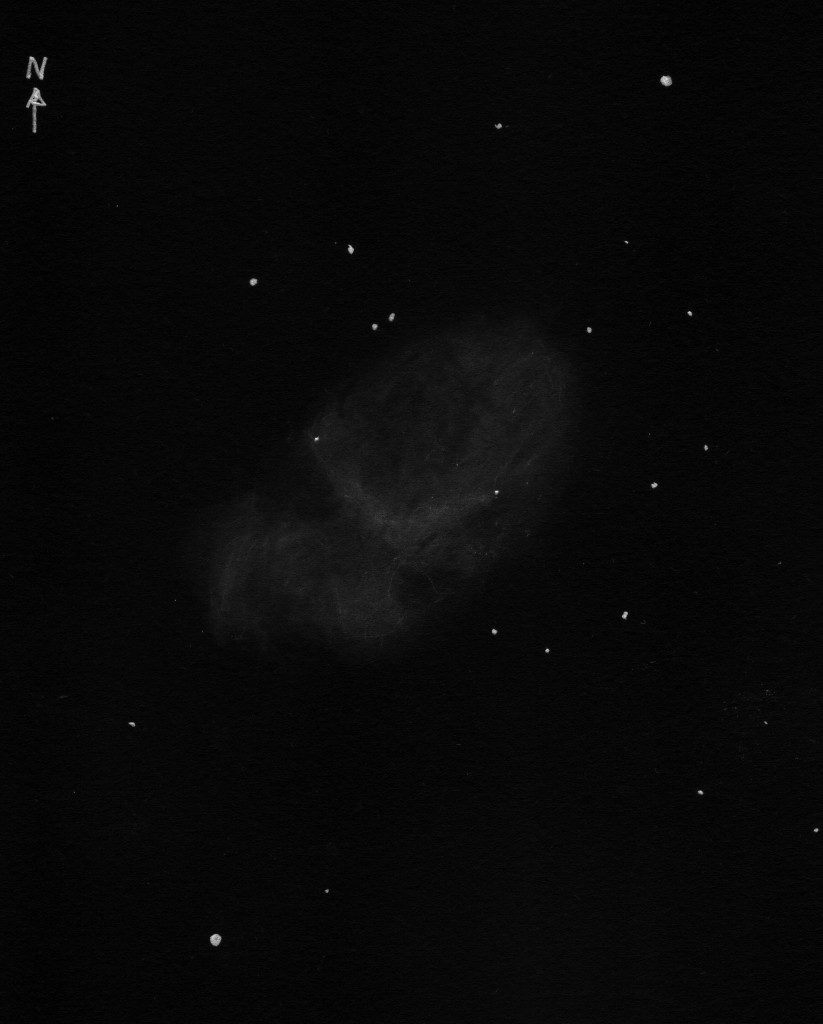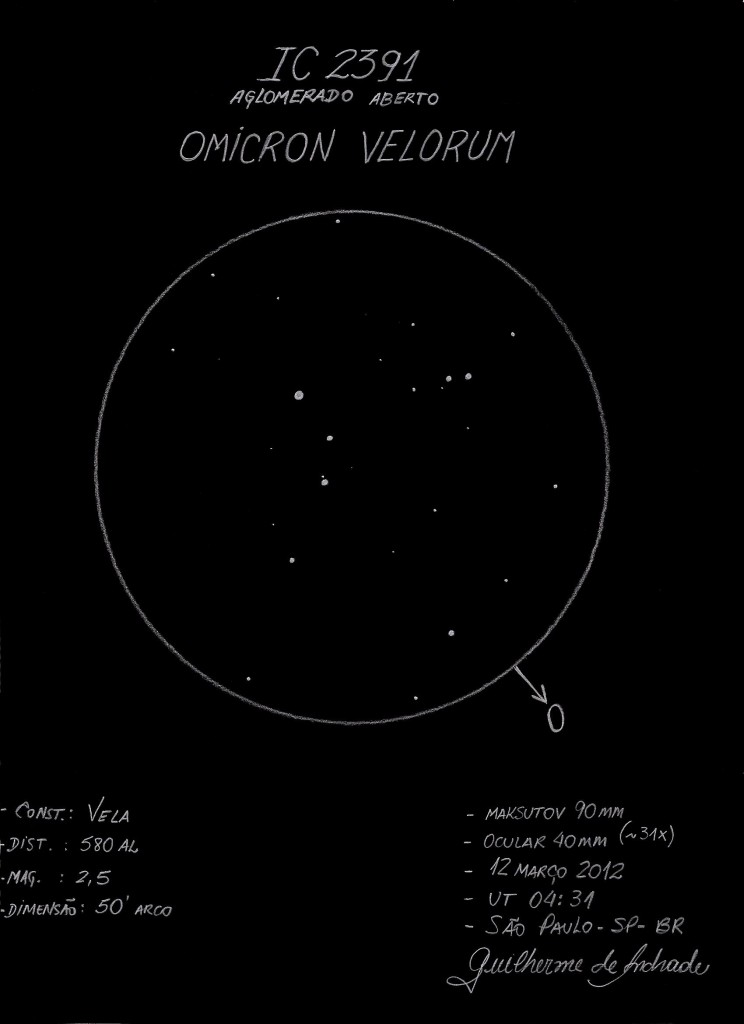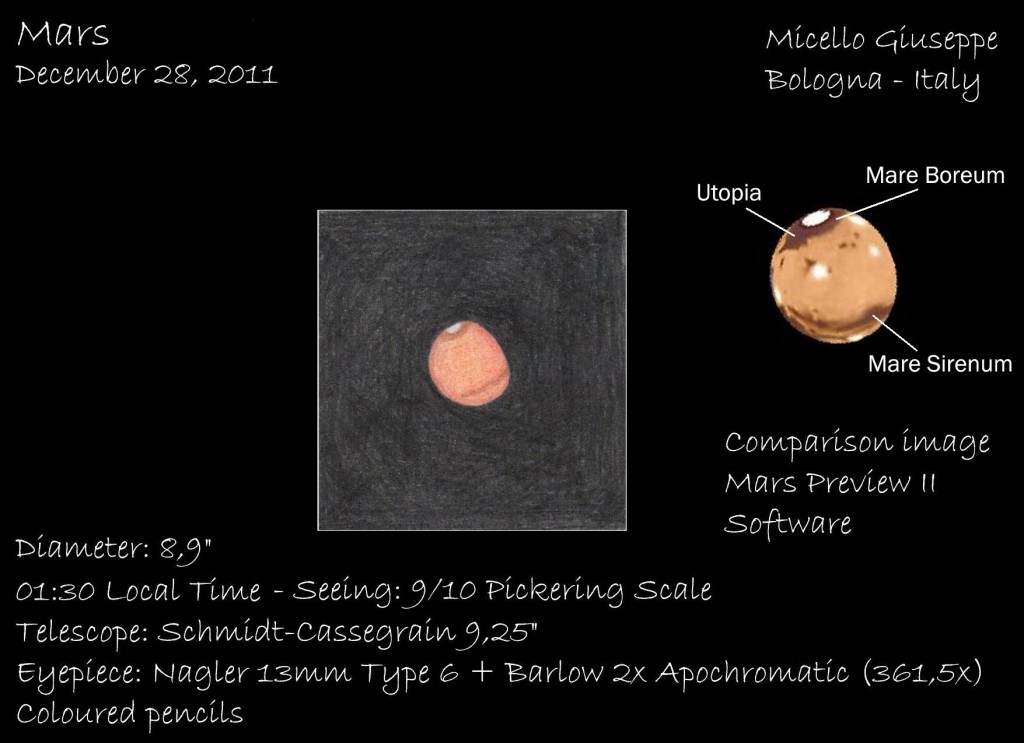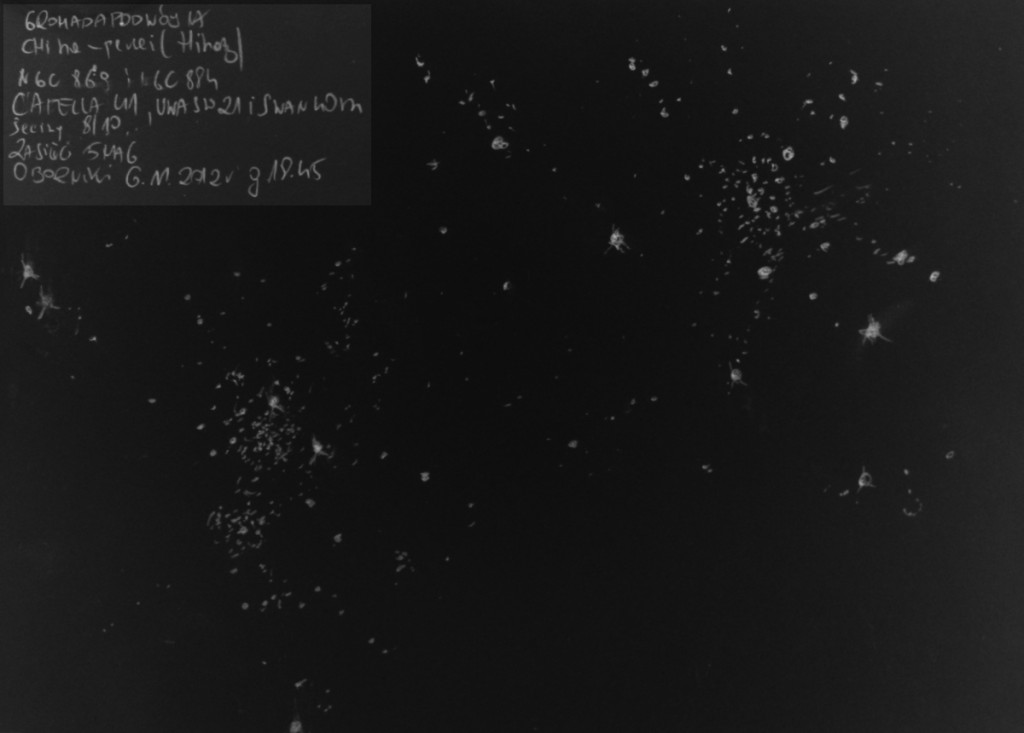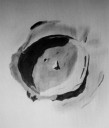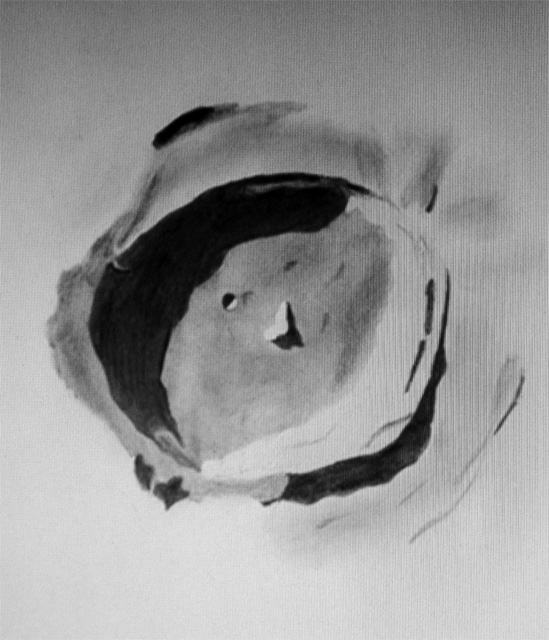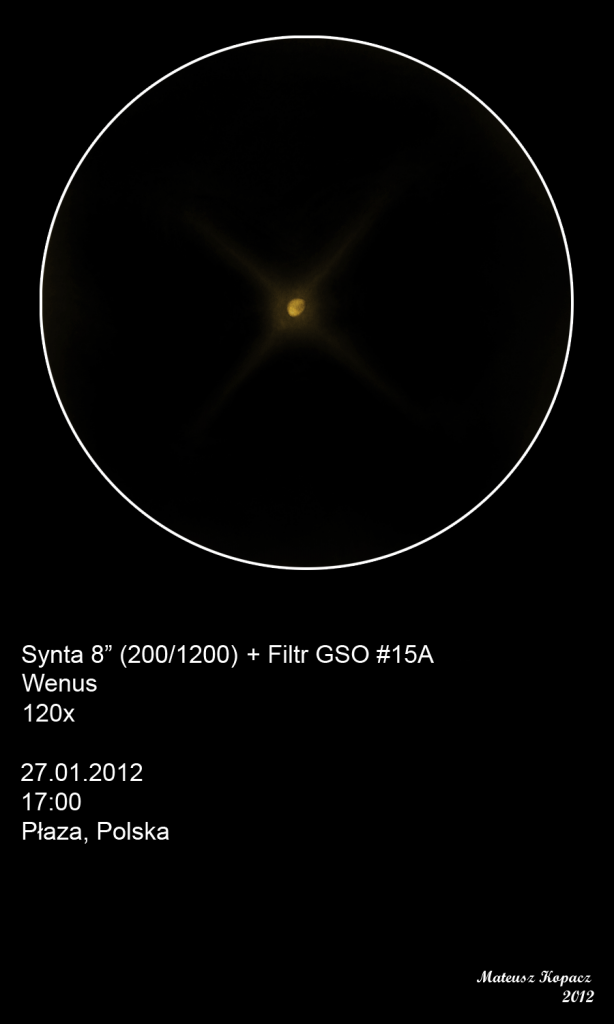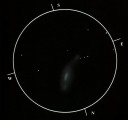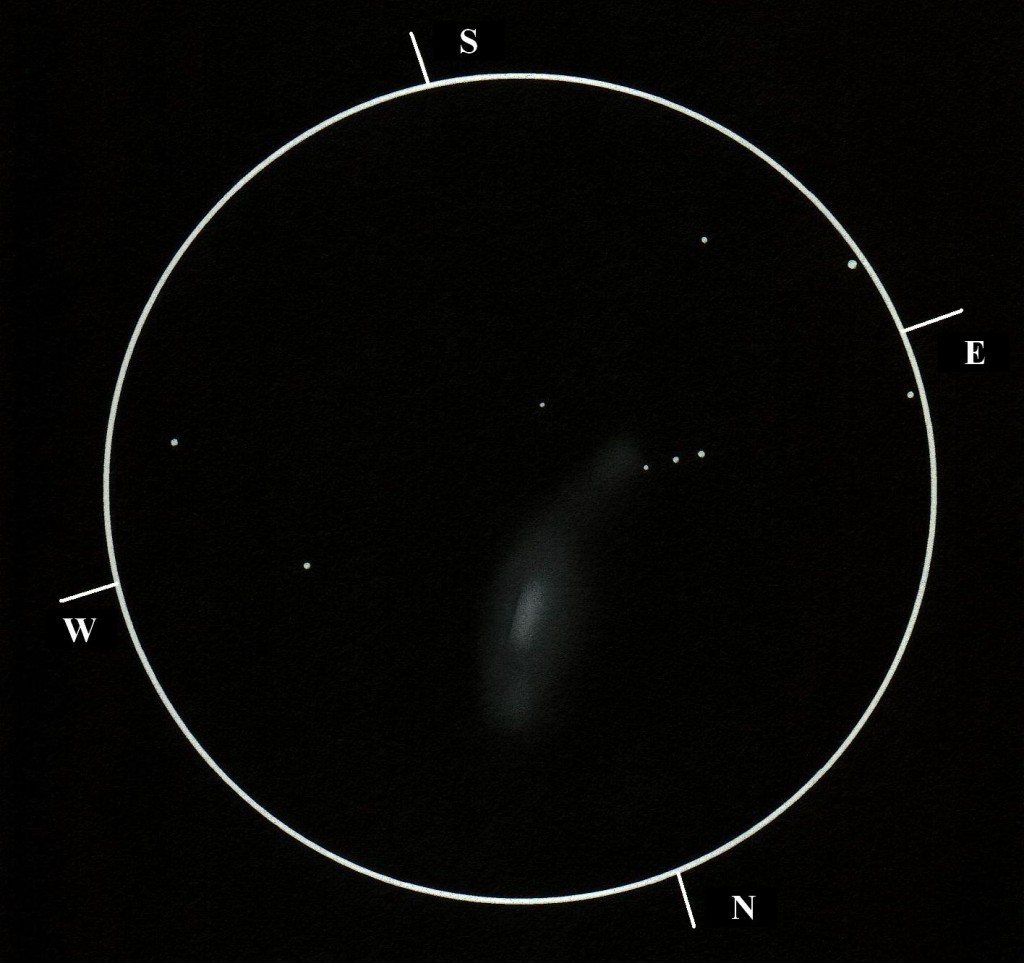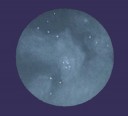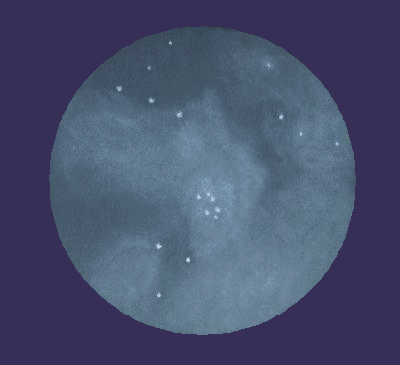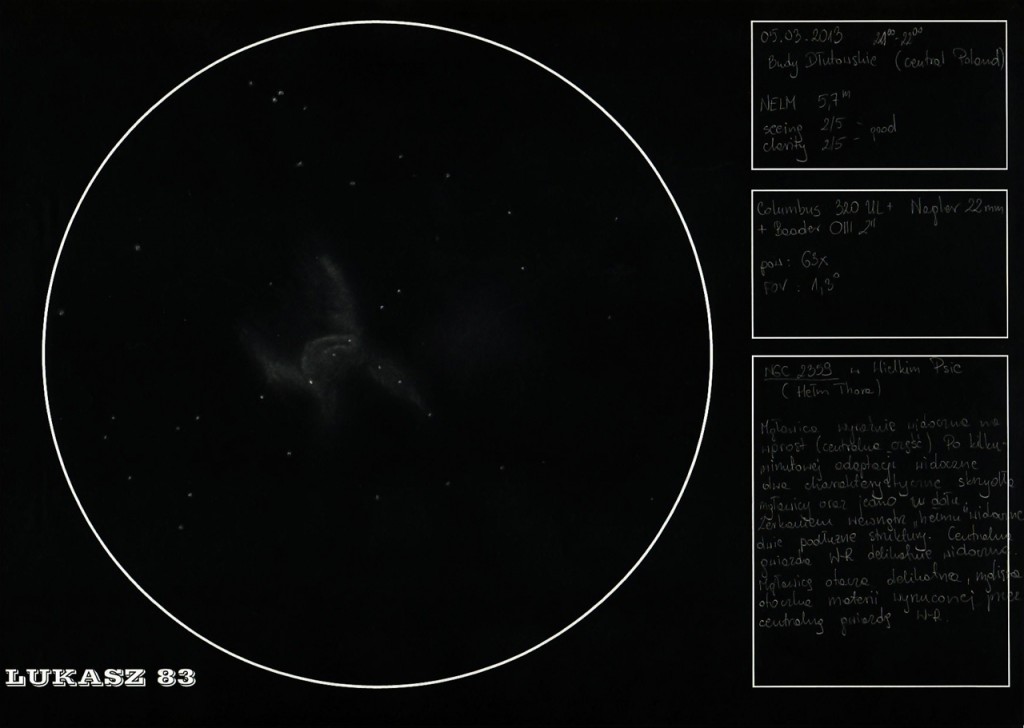
Object Name NGC 2359
Object Type emission nebula around Wolf Rayet star
Location Budy Dłutowskie – small village in central Poland
Date 05.03.2013
Media graphite pencil, white paper, color invert
Telescope Columbus 320UL (320/1384 Newtonian) +
Nagler 22mm + Baader OIII 2”
Seeing 2/5 (good)
Transparency 2/5 (good)
NELM 5,7 mag
In my opinin this object is very underestimated. Usually
astrophotographers choose it as their targets but viusual observers
don’t look at this nebula very often. And this is very bad…. because
object is really impressive. In 10-12” telescopes (or greater of
course) you can see main central helmet shaped part of nebula and
after 2-3 minutes of adaptation you can observe beautiful wings which
grows from central part. Inside helmet, around central W-R star you
can see delicate linear structures created by nebula gas.
OIII filter is necessary and it is greatly improve contrast and shows
many details of this very beutiful object.
If have an occasion try to see it. You won’t be dissapointed 🙂
Clear Sky
Łukasz

